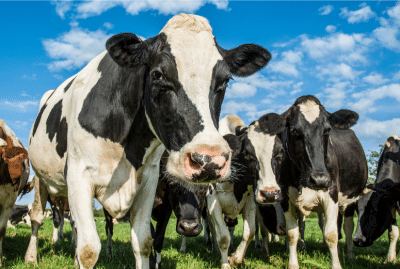Heat stress can have long-term health and production consequences for dairy cows.
 Cattle begin to experience heat stress when the temperature-humidity index (THI) exceeds 72, which can lead to health consequences, decreased milk production and changes in the concentrations of milk fats and proteins.
Cattle begin to experience heat stress when the temperature-humidity index (THI) exceeds 72, which can lead to health consequences, decreased milk production and changes in the concentrations of milk fats and proteins.
It is estimated that dairy cattle in Western Canada experience some heat stress on 40 percent of summer days.
In the United States, where heat stress is generally greater, it costs the industry more than US$1.5 billion annually due to lower production, more animal illness and shorter cattle lifespans.
But it may be even more wide-reaching than that. Recent research from the University of Florida and the University of California, Davis, has shown that heat stress in pregnant cows affects the productivity and health of their female offspring.
According to a news release, heifers born to cows that are heat-stressed during their late gestation grow to be smaller and produce on average five kilograms per day less milk in their first lactation compared with heifers born to cows that were cooled during the hottest days of the year. It is a condition that lasts throughout their adulthood and, while it is not genetic, it is the result of a change in the maternal environment.
“Looking at the first three lactations of the daughters, we saw a significant difference,” said Veronique Ouellet, assistant professor formerly with the University of Florida and currently with Laval University in Quebec.
“For the first lactation, we had a reduction of 2.2 kilograms per day, for the second it was 2.3 kg per day and for the third, it was even higher at 6.5 kg per day.”
She said the study is still tracking the granddaughters, which have not yet started a second or third lactation.
“But for the first lactation, we saw a significant difference.”
According to the report published in the Journal of Dairy Science, the reduction in milk yield is due, in part, to abnormal mammary development taking place in the dry period.
“Specifically, exposure to dry-period heat stress delays early mammary gland involution (shrinkage from inactivity) and impairing mammary gland proliferation during its redevelopment,” the authors wrote.
The research team analyzed data collected over a 10-year period on the performance of Holstein cows in Florida, the state with the greatest number of heat stress days per year. This provided information on lifespans, productivity and reproductive performance of two successive generations of cows born to dams exposed to heat stress during pregnancy, as well as those born to dams that were provided cooling measures during heat-stress periods.
Daughters and granddaughters of heat stressed cows showed negative effects in rates of survival from birth to first calving, length of productive lifespan, and milk performance, yields, and nutrient contents during the first three lactations. The calculated U.S.-wide economic impact directly to dairy producers from 2010-15 was about $595 million annually based on (then) average milk prices.
The data suggests a permanent effect on the fetal environment that impairs the offsprings’ lifetime performances. But whether dairy farmers see a relationship between heat stress with their dry cows during late gestation and the performance of female offspring in future years is unknown.
The research team recognized that lactating cows were more often the focus of heat reduction strategies, possibly because the effects of overheating were more immediately evident. However, the research showed that for non-lactating pregnant cows, the damage becomes apparent later, first when milking resumes and much later as the female offspring mature.
“For dairy producers, they may probably never notice that (the relationship) is directly attributable to heat,” said Ouellet.
“We are hoping, by publishing this research, farmers will pay more attention and try to implement more strategies to cool their dry cows down.”
She said Quebec has more than 60 days that can provoke heat stress in pregnant cows and it would help if sprinklers were installed in barns to cool the animals.
According to the Ontario Ministry of Agriculture, Food and Rural Affairs, cows get rid of body heat through four ways: conduction, radiation, evaporation, and convection.
To cool dairy cows, OMAFRA suggests a three-step approach with an effective ventilation system, adequate water supply, and supplemental cooling systems. Those can include sprinklers, fans or fogging systems.
Heat stress issues aren’t likely to go away any time soon. In fact, the effects of climate change may worsen the problem in 10 or 20 years, said Ouellet.
“We need to adapt the dairy barns so that the animals will be able to cope better with any stress.”
Source: Western Producer
